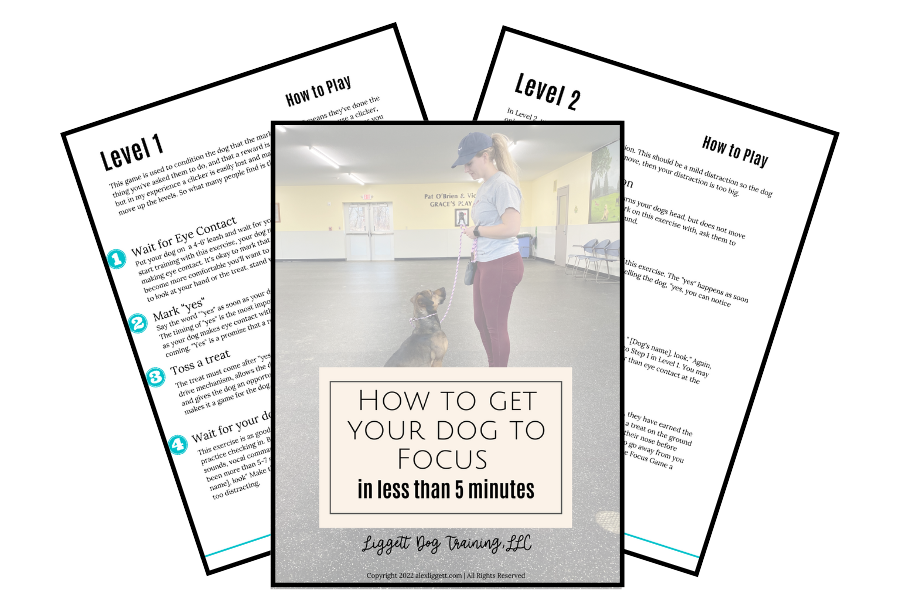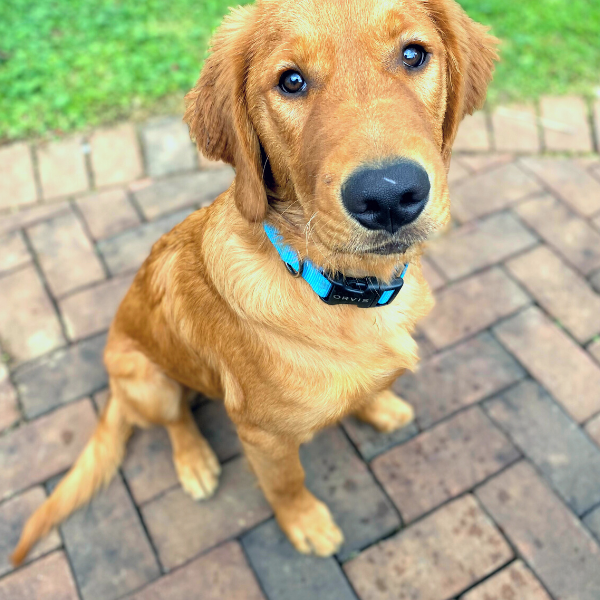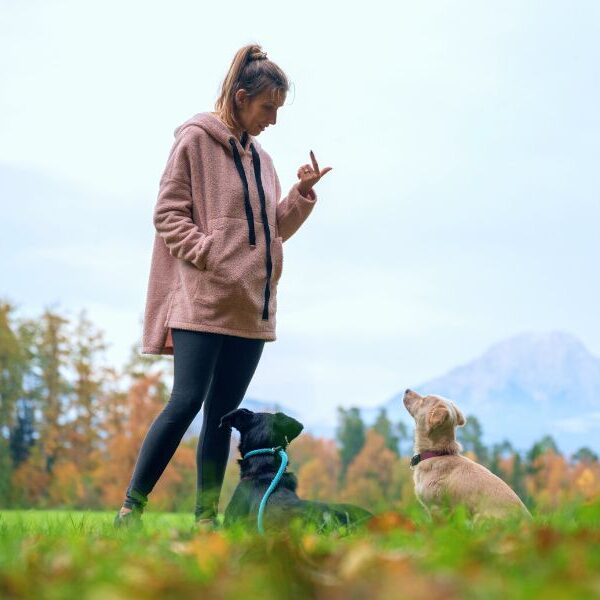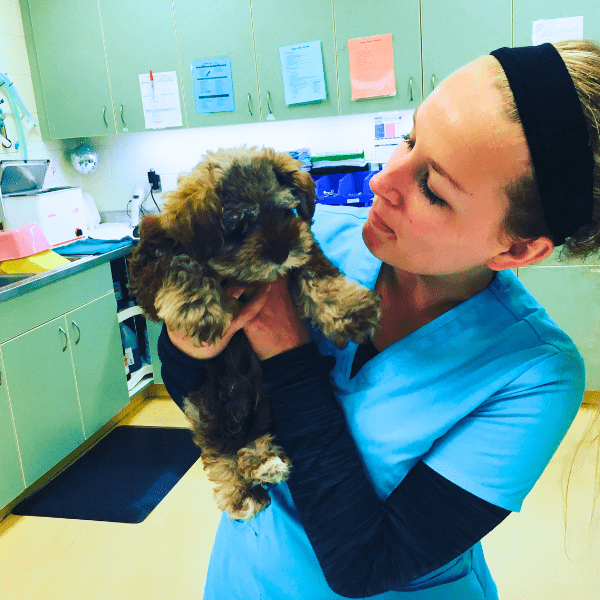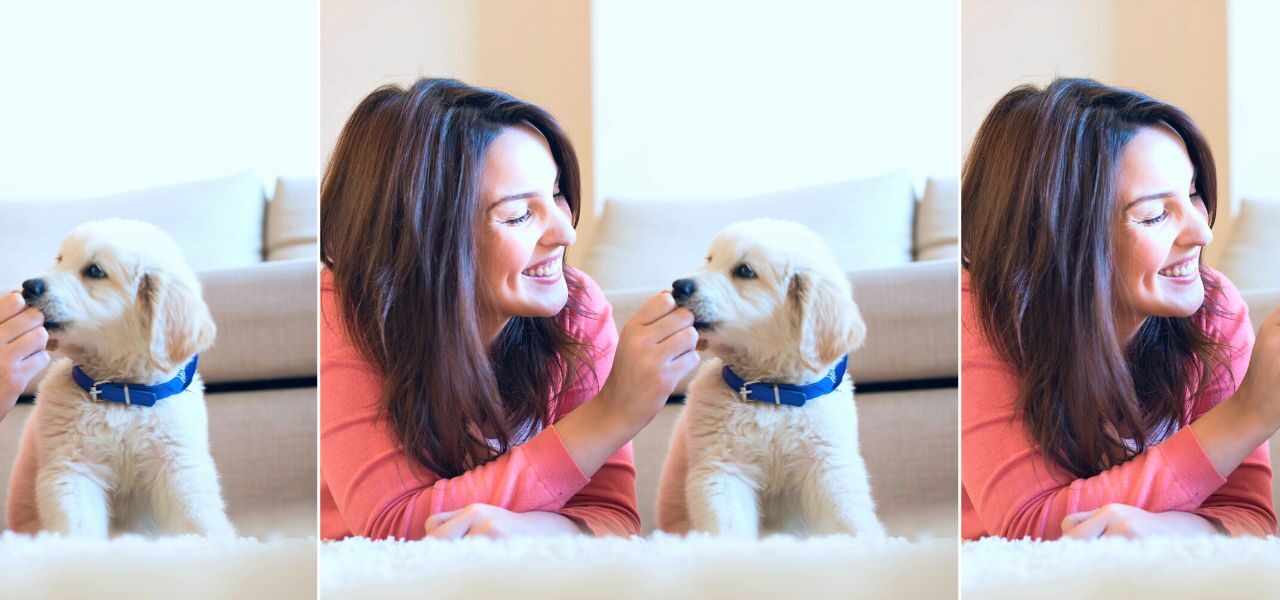
This post is all about dog training tips for beginners.
Whether you have just brought home a new dog, or you're just getting started with your dog, the training process can feel overwhelming and frustrating. If you're new to dog training, or you're feeling a little frustrated, these tips are for you! Frustration is just the end of our knowledge, so when in doubt, ask questions and research.
In this post, you'll learn the very basics of dog training.
Dog Training Tips for Beginners

How to Train a Dog at Home
Training your dog probably sounds like teaching your dog to sit, come and walk nicely on a leash, but did you know you're always training your dog?
Have you ever heard the saying, "beginner dancers take intermediate dance lessons. Intermediate dancers take advanced dance lessons. And advance dancers take beginner lessons?"
When in doubt, it's always a good idea to revisit the basics of dog training. This means going back to your sit command and leash work.
Related: Teaching a Dog to Sit so They Listen the First Time
Your dog learns a number of ways, the two main ways being: through reward or avoid pressure. When it comes to reinforcement, this is anything that increases a dog's probability for doing the behavior again. For example, a dog who gets a treat for sitting is more likely to sit again. A dog who gets pet for jumping up is more likely to jump up in the future.
Pressure and correction is a little trickier.
Stepping into a dog or adding leash pressure to get your dog to sit would be a form of a pressure. Once the dog sits, you remove the pressure. The dog learns that if you put pressure on, they can shut the pressure off through compliance.
What is the first thing you should train your puppy?
When you first bring your puppy home potty training is one of the most important life skills your puppy should learn. Same goes for dogs who are new to your house or shelter dogs.
This means, taking your puppy out before and after play, before and after naps, after drinking or eating, or every 20-30 minutes for an awake puppy.
Your job is to create as close as possible to a 100% success rate for your puppy to go outside. Any time your puppy goes in the house, it's an opportunity they learned to go in the house.
How do you achieve a 100% success rate? You either are watching your puppy or they're in the crate.
Besides potty training, one of the most important things you should teach your puppy is the word "come".
Related: 53 Recall Words for Dogs That Aren't "Come"
Do this by providing your puppy lots of praise, pets and treats of high value when your dog returns after saying the word "come", or whatever your recall word is. Your puppy should feel like the word "come" is like getting the winning the lottery ticket.
Dog Training Basic Obedience Lesson Plan
Whatever you decide to train your dog to do, the most important key to success with dog training is consistency and persistency.
Ideally, actively working with your dog for 10-20 minutes a day should help both of your skills improve.
Puppy Training Tips 8 Weeks
Your puppy is always learning! They can start learning basic behaviors like sit, heel and lay down as early as 8 weeks. Puppies tend to follow the most exciting thing. So using praise, treats and kibble will go a long way with them.
Puppy Training Tips:
1. Feed your puppy in an interactive toy
2. Let them win tug of war
3. Let them spend time in the crate while you're home.
Quick Dog Training Tips
Here are 3 quick training tips for beginners:
1. Implement a release word
2. When in doubt, use a crate or a leash to prevent your dog from rehearsing unwanted behaviors like jumping up or being destructive.
3. Generally, make the right thing fun and the wrong thing boring.
4. Increase the opportunity for success, and decrease the opportunity for failure.
Dog Training Tips for Beginners at Home
Dog training should be fun for both you and your dog! If you are ever not feeling excited or having fun with the training, or your dog doesn't seem to be responsive, it's time to take a break.
Free Online Dog Training
There are dozens of free dog training videos on the internet! No matter what issue you're working on, there's bound to be a youtube video for it.
Top 10 Things to Train Your Puppy
Here are the top 10 commands (in order) to teach your puppy:
*indicates an implied "stay."
- Come
- Leave it
- Heel
- Place*
- Drop it
- Sit*
- Lay down*
- Stay*
- Off
- Shake

